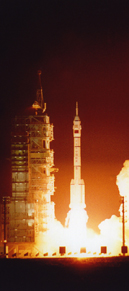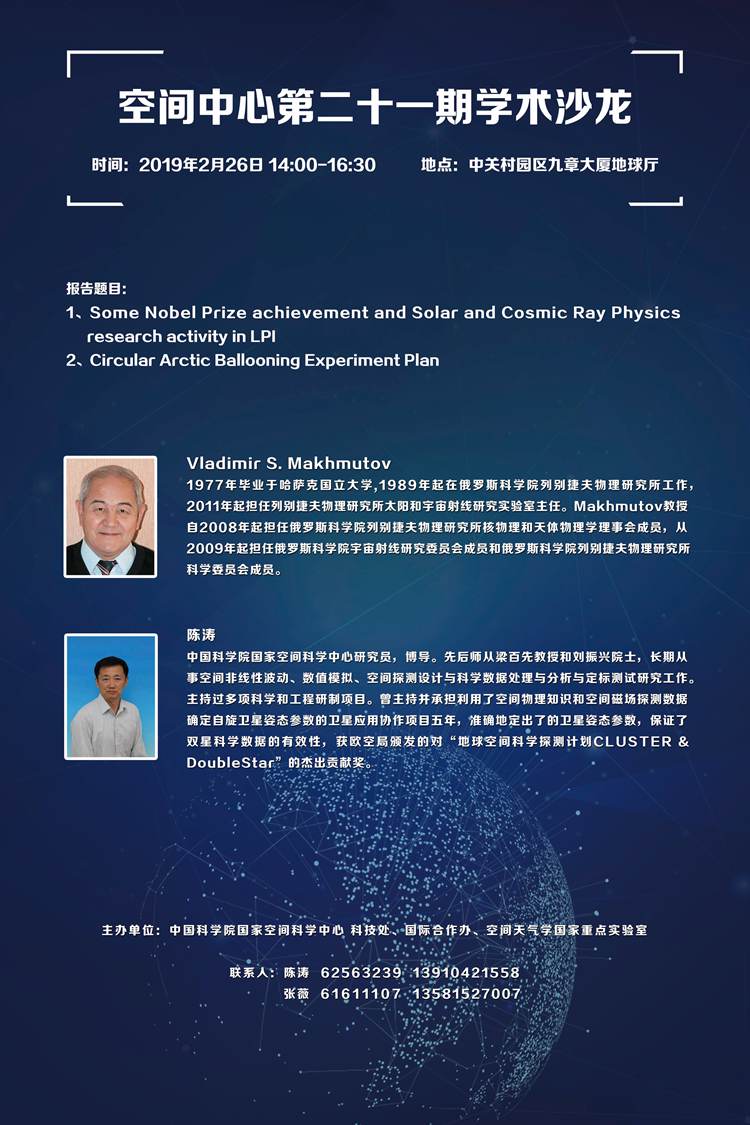


1、"Some Nobel Prize achievement and Solar and Cosmic Ray Physics research activity in LPI"
abstract:
Mainly, I’ll concentrate on the Solar and Cosmic Ray Physics research activity of the Laboratory of Solar and Cosmic Ray Physics of the Lebedev Physical Institute RAS (Moscow, Russia).
The talk will include several items as follow,
- Short introduction to the LPI history and Nobel prize winners of the LPI
- Long-term cosmic ray experiment in the atmosphere since 1957 till now based on ballooning at several locations (including North polar regions, mid-latitude stations, obs. Mirny in Antarctica). Precipitation of galactic and solar cosmic rays, as well as energetic magnetospheric electrons precipitation into the Earth’s atmosphere. Ionization in the atmosphere.
- Ground based cosmic rays/charge particle monitoring system at different altitude and latitude (in Russia and at foreign scientific stations): system construction and data analysis. Energetic phenomena in the surface atmosphere.
- Short overview of the International space experiment PAMELA (Payload for Antimatter Matter Exploration and Light-nuclei Astrophysics): Construction of the neutron detector. Data analysis.
- International CLOUD (Cosmics Leaving Outdoor Droplets) experiment at CERN: Scintillation Hodscope and GCR detector construction. Data analysis. Cosmic rays and atmospheric processes.
- New space project “SUN-TERAHERZ” onboard ISS in preparation since 2017.Investigation of unexplored solar electromagnetic emission domain.
2、Circular Arctic Ballooning Experiment Plan
abstract:
Solar storm is an important source which drivse space weather. It will influence various sphere environment change near the earth, especially electric field structure in following four manners: (1) Electromagnetic radiation burst from the sun change upper and middle atmospheric ionization. (2) Solar high energetic particle incidence change middle and high altitude atmospheric conductivity.(3) Interplanetary disturbance structure (such as magnetic cloud) shield the incidence of galaxy cosmic ray into the earth’s atmosphere (4)CME, CIR, Sector boundary crossing and interplanetary shock cause geomagnetic storm to make huge particle precipitation and then potentially modulate 0-200 km atmospheric change. For revealing the (4)driving process, an international circular arctic ballooning campaign has been proposed. It will coordinate the observation of SMILE to see how delay the 0-60 km atmospheric neutral components and electric parameters change. The detailed scientific objectives, instruments, flight region, flight height, flight duration and international team have been reported in this introduction.